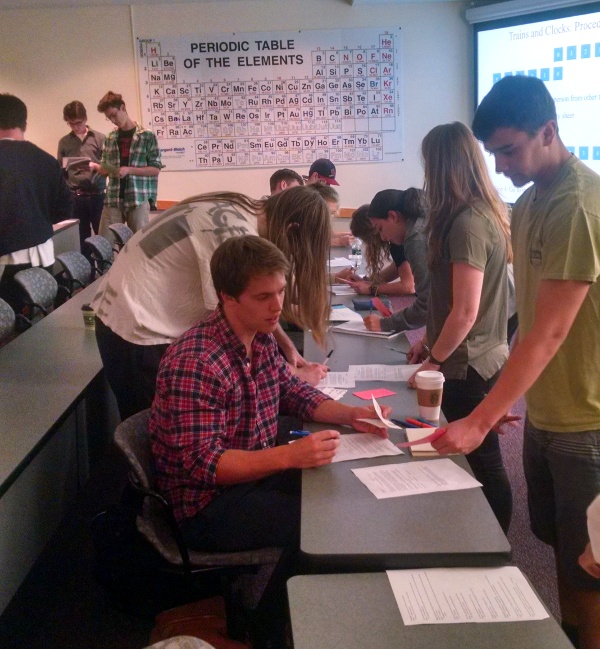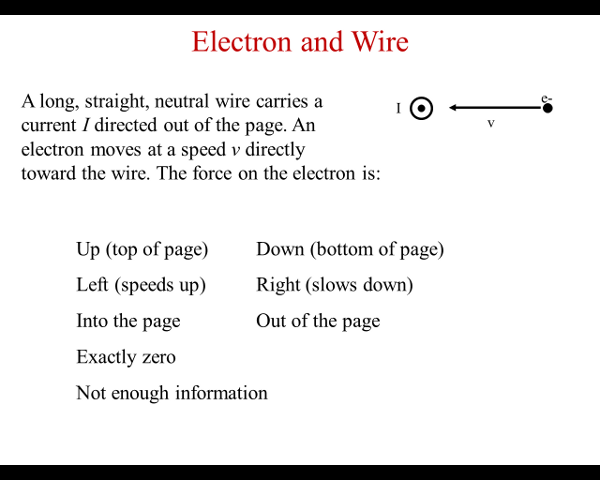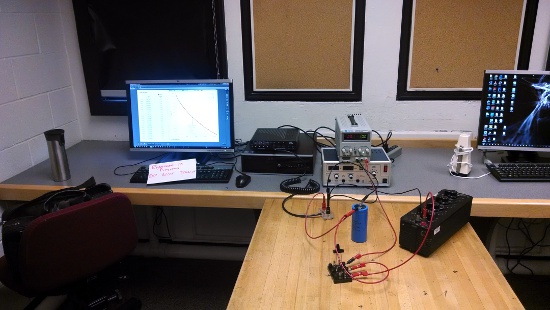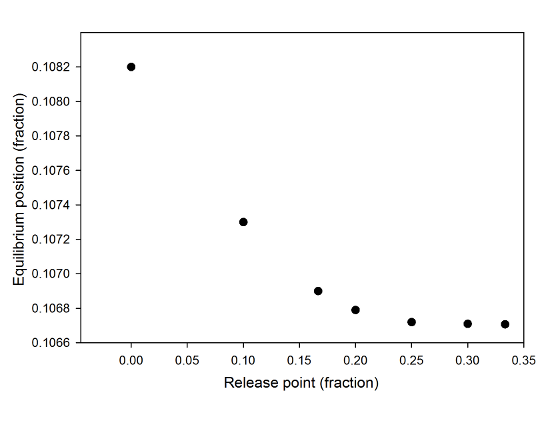My Gen Ed relativity course has mostly been me lecturing about stuff to this point, so on Wednesday I decided to shake things up a bit and convert a chapter of David Mermin’s It’s About Time. The idea was to get students up and moving around a bit, and actually making some measurements of stuff.… Continue reading Trains of Clocks
Category: Course Reports
New Year, New Class: Gen Ed Relativity
The new academic year starts this week– first day of classes is Wednesday– and I’m dealing with the usual chaos associated with the influx of a new class of students. Who now look to me only a tiny bit older than SteelyKid and the Pip in the above picture (and if you think that sharing… Continue reading New Year, New Class: Gen Ed Relativity
Uncertain Dots 16
For the sixteenth episode of Uncertain Dots, we decided to bring in some guests, Andy Rundquist and Kelly O’Shea for a conversation about standards-based grading. This came up because I’m playing around with this using the same tiered scheme I talked about back in January. This was a fun conversation, and some interesting ideas came… Continue reading Uncertain Dots 16
The Importance of Shaking Things Up
That recent study on active learning continues to generate some press, including a new interview with Carl Wieman about why traditional lectures are problematic. Wieman is pretty blunt about his opinions on the subject, which will come as no surprise to people in the AMO physics community… Anyway, while most of the rest of the… Continue reading The Importance of Shaking Things Up
Mysteries of Introductory Physics
Every now and then, I run across a question in class that I genuinely don’t know how to answer. If I’m lucky, this happens when I’m prepping a class, rather than when a student asks it live. Like today, when I noticed the above discussion question in my slides (reproduced at the bottom as well… Continue reading Mysteries of Introductory Physics
“Gen Ed” Relativity: Pondering Books
This coming fall term, I’ll be teaching Astronomy 052, “Relativity, Black Holes, and Quasars,” because the guy who has traditionally taught it (a radio astronomer who studies active galactic nuclei) has to do other courses instead. But I said “Well, hell, I’ve written a popular audience book explaining relativity. I can teach that.” And since… Continue reading “Gen Ed” Relativity: Pondering Books
Uncertain Dots, Lucky Number 13
We had a couple of weeks of unplanned hiatus due to sick kids and day care closures, so the superstitious among you might’ve thought we would never get to the 13th episode of Encertain Dots. Rhett and I are scientists, though, so we powered through: Given the time of year, this is mostly about end-of-academic-year… Continue reading Uncertain Dots, Lucky Number 13
What Is the Resistance of an Instek GDM 396 Current Meter?
Last week, we looked at the resistance of a voltage sensor by using the discharge of a capacitor, getting a value that was a bit high, but not wildly out of line with the specs. This time out, we’re going to look at the resistance of a current meter, because some students asked about it… Continue reading What Is the Resistance of an Instek GDM 396 Current Meter?
What Is the Resistance of a PASCO 750 Interface Box?
For the latest in our ongoing series of post where I overthink simple questions, I’d like to present the longest single continuous experiment in Uncertain Principles history, which took six and a half hours yesterday. All to answer the question in the post title. This may seem like a waste, given that I could download… Continue reading What Is the Resistance of a PASCO 750 Interface Box?
The Tricky Thing About Simulated Dynamics
In the previous post about simulating the attraction between sticky tapes using VPython, I ended with a teaser mentioning that there was a discrepancy between the simulation and the theoretical solution from directly solving the equations. The problem is kind of subtle, but clearly visible in this graph from that post: In this, we see… Continue reading The Tricky Thing About Simulated Dynamics






